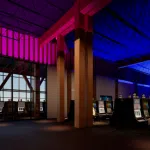
Saskatchewan soaks up inspiration from Mars landing
NASA has successfully placed the world’s – and the known universe’s – most expensive six-wheeled vehicle on Mars, after a nerve-wracking entry, descent and landing of the Perseverance Rover on Thursday.
Given humanity’s absorption with the COVID-19 pandemic, the live-streamed event provided a much-needed distraction and some fascination for those around the world who watched the tension-filled final minutes of the Perseverance rover’s seven-month trip to the red plant. The total mission cost is around $2.7 billion.
Scientists hope the vehicle’s exploits in the coming years along with a future mission to return geological samples to Earth, will provide key answers about past life on Mars and, potentially, provide a better understanding of our own planet’s future.
Saskatchewan watches





